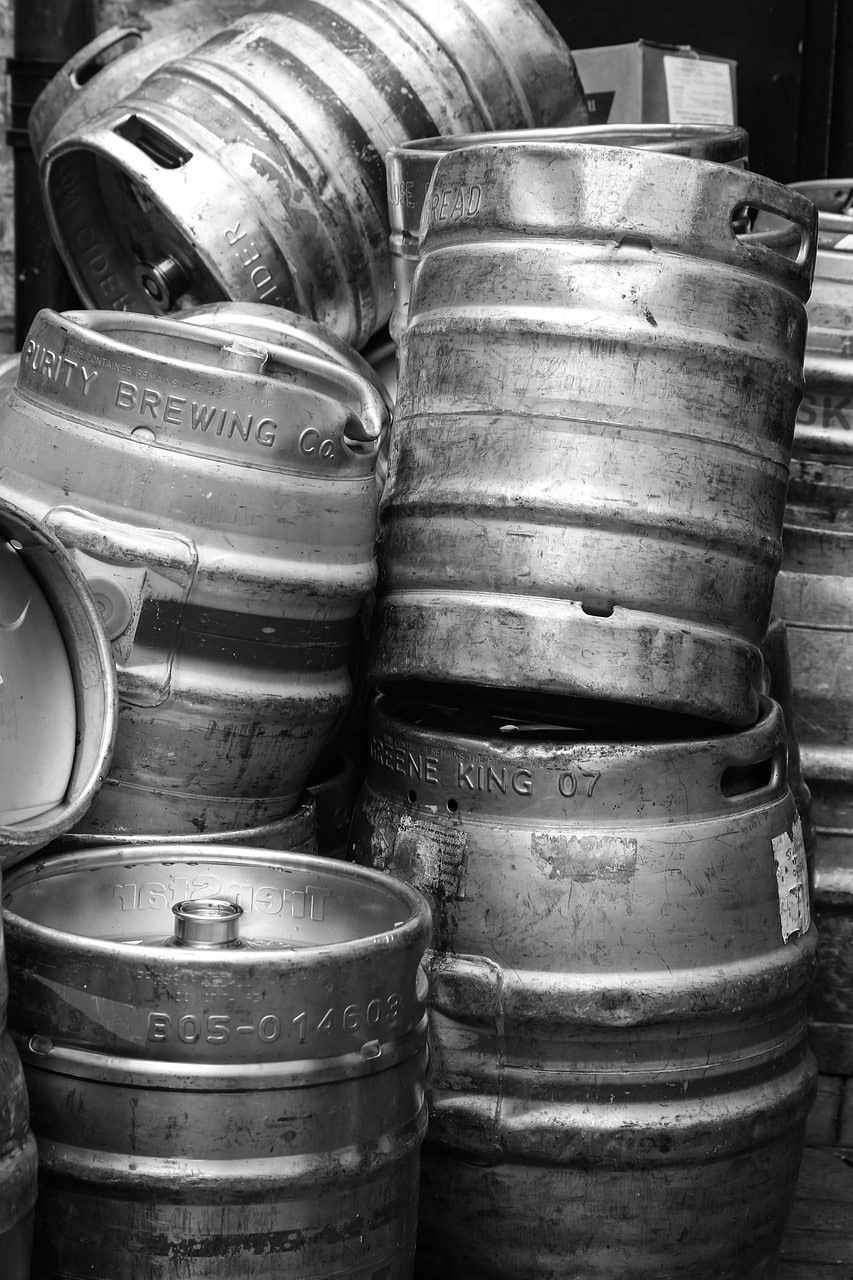“The real cost is always more than the money you shell out.” Jeff Nichols
Craft breweries have many options when it comes to owning or leasing kegs. Options are good but too many choices can be overwhelming.
In this article, we’ll dig into the details of owning, leasing and pay-per-fill plans. We’ll look at hypothetical costs and review how each arrangement works.so that you can reduce this expense and make the best decision for your brewery.
- The True Cost of Kegs: Hard Costs and Soft Costs
- Keg Leases: Low Capital Up Front, but You Never Stop Paying
- Pay Per Fill: Sharing Kegs with Other Breweries
- Keg Purchases: Stainless Steel or PET One-Way Kegs?
The True Cost of Kegs
A first step in evaluating which keg option is best for your brewery is to be aware of all the costs involved with keg management: hard costs and soft costs.
Hard costs are what you pay for the kegs themselves – the lease or the purchase cost. Soft costs include things like handling, cleaning and tracking kegs. There is labor, equipment time, chemicals and utilities expense involved here.
Another soft cost is lost kegs. As discussed in previous articles, this expense can run $100,000 or more if you don’t have a good system to track your kegs.
Hard costs are easy to see because they are listed on the invoice from the vendor. Soft costs are less obvious, and tend to be overlooked when estimating the total cost of kegs and keg fleet management. However, be aware of them because soft costs can add up fast.
Keg Leases
Under a keg lease arrangement a company like MicroStar rents the brewery kegs in different sizes for a fixed monthly fee. There is usually a minimum required rental period and a deposit due for each keg.
Hypothetical Keg Lease arrangement
- $0.11 per day / 1/6 barrel kegs
- $0.12 per day / 1/4 barrel kegs
- $0.13 per day / 1/2 barrel kegs
- 18 Month Minimum
- $30 Deposit Due for Each Keg
Under this plan the brewery estimates the number of units they will need and the vendor provides new kegs. After that, the brewery is responsible. Any lost kegs are charged back to the brewery.
To determine the Hard Costs of a leasing arrangement, multiply the number of kegs you need in each size, by the monthly rate. You can use this simple calculator to estimate your total costs.
The Soft Costs of leased kegs, such as handling, cleaning, and tracking are your responsibility. If kegs go missing, and they will, you are responsible to pay for them.
The major benefit of a keg lease is that you don’t have to come up with all the capital to buy new kegs. However, the major downside is that you never stop paying for the kegs. After 18 months of leasing, the math shows that you could’ve bought your own.
Pay Per Fill
As the name implies, with a Pay Per Fill model you pay a fee each time a keg is filled and shipped out to the distributor.
Under this arrangement, the vendor uses a ‘pooled keg model’, which means the same kegs are shared by many breweries. This is different from a lease model, where the kegs you receive are yours alone.
With Pay Per Fill, each brewery is responsible for cleaning and maintaining the kegs while in their possession. Similar to the lease arrangement, a $30/keg deposit is charged to the brewery.
- The brewery orders the kegs and receives from the vendor.
- The brewery then fills and ships kegs to the distributor, and tells the vendor where the kegs were sent.
- The vendor is responsible for the kegs from this point forward.
- Under this model there is little risk to the brewery for lost kegs so long as communication is made to the vendor when kegs ship.
The costs of Pay Per Fill vary based on the size of the keg and the distance it will travel. For example, a 1/6 BBL sent to a local wholesaler may be $9/fill while a 1/2 BBL sent across the country costs $18/fill.
If all of your business is with local wholesalers, it should be easy to calculate your costs. However, if you’ve got kegs travelling all over the place, the math gets a bit more complicated.
The key to estimating costs is to determine how many kegs you ship in a year and how far they travel. You can then compare this cost to the Keg Lease and the Keg Purchases option which we’ll cover next.
Keg Purchases
On average, stainless steel kegs cost about $100 apiece and can last 20 years or more. That works out to a Hard Cost of about $5/year ($100 cost divided by 20 years of life).
Compared to the Lease or Pay Per Fill options, keg purchasing seems like a no brainer.
The biggest downside to purchasing kegs is that you have to come up with all the cash up front. At $100 each, 1000 kegs will set you back $100,000. Most small craft breweries don’t have this type of cash sitting around.
Keeping track of your owned kegs is important as well. Kegs have legs and tend to disappear if you don’t keep a close eye on them. At a loss rate of 10% to 15% each year, all your purchased kegs will vanish in a matter of years.
One-Way Keg Purchases
A hybrid lease-purchase option is the One-Way Keg. These are single-use, PET material kegs that provide many advantages over traditional stainless steel:
1.No deposit to distributors or retailers
2.No return logistics
3.Less weight, less space
5.Less handling of the kegs (no cleaning, tracking, managing)
Costs will vary, but PET kegs may range from $13 to $18 apiece based on size and quantity ordered. So, an order of 1000 One-Way kegs might run you $15,000.
Wrap up + Action items
Kegs are a big expense for your brewery. Do a little research and figure out how much you are spending now.
Costs change frequently, so numbers presented here are for illustration purposes only.
Look at the Hard Costs of kegs: the Lease rate, the Pay Per Fill costs, or total cost of purchased kegs. Next, calculate your Soft Costs: Handling, cleaning, and tracking.
When you add it all up and you may be surprised at how much money is at stake.
Do the math, and do some research. If you are leasing kegs now, does it make sense to consider an alternative like Pay Per Fill? If you own kegs, do you have a good system to track them so they don’t grow into lampshades? Would One-Way kegs make sense for your brewery?
Consider the dollars at stake, determine what is best for your business and implement a solution to reduce keg costs in your brewery.





